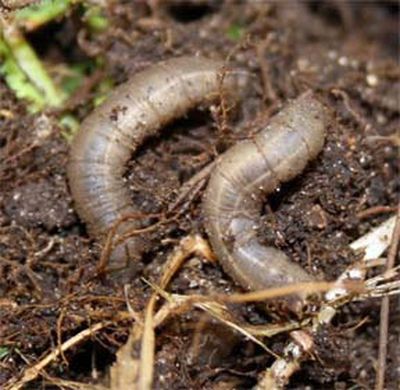European crane fly a new pest that could trash your lawn

This spring Spokane lawn owners may be dealing with a relatively new lawn pest, the European crane fly – or more specifically its larvae, which feed voraciously on sod roots.
The European crane fly is a relative newcomer to the Northwest and has been a challenge to lawn owners on the West Side of the state for several years. It has now made its appearance in our area.
The adult fly resembles a very large mosquito with four long legs, an inch-long body and two clear wings. They lay eggs in sod in the late summer. In the fall, the larvae, called leatherjackets, hatch in the soil and begin feeding on grass and plant roots before going dormant. When the weather warms in the spring, the now over 1-inch, white, grublike larvae begin feeding again.
The first sign that you may have a crane fly problem is yellowing and dying random patches of grass. There are several other cultural conditions and insects that can cause this kind of damage so it is important to identify the problem correctly before you make a choice of control methods.
The control methods for European crane fly are determined by the number of leatherjackets counted in a 6-inch square of sod. To do this, mark off a 6-inch square of sod and dig it out, taking a couple of inches of soil with it. Break the sod clump apart and count the number of larvae you find. Multiply that number times four to get the number in a square foot.
If you find 25 or fewer larvae it is not necessary to treat for them. A healthy lawn will regenerate faster than they can eat it. For a count between 25 and 50, put effort into keeping your lawn in good health. Aerate and apply a high-quality organic fertilizer that releases nutrients slowly. Crane fly larvae do better in moist soils than dry, so water deeply and less often; an inch of water every four to six days. Mow the grass high to allow the remaining grass to shade the soil and reduce evaporation.
If you find more than 50 larvae, it may be necessary to treat them. Biological control measures should be tried first and include insect-eating birds that pick off the adult flies in the summer and early fall as the bugs fly over the lawn looking for mates. Birds also relish larvae that come to the surface of the soil and eat great quantities of them if given a chance. Ground beetles and other predacious insects will eat the grubs they find underground and on the surface.
If a chemical treatment is necessary, make the application in the spring only, using a registered product for lawn- insect and grub control specific to crane flies. Ortho and Bayer both make a homeowner- registered product for the purpose. Water the chemical in well after an application. If you use a commercial lawn maintenance company insist they do a grub count before applying a chemical. The chemicals can damage beneficial insects including bees.